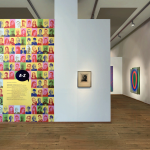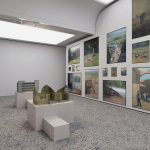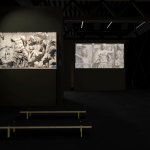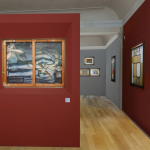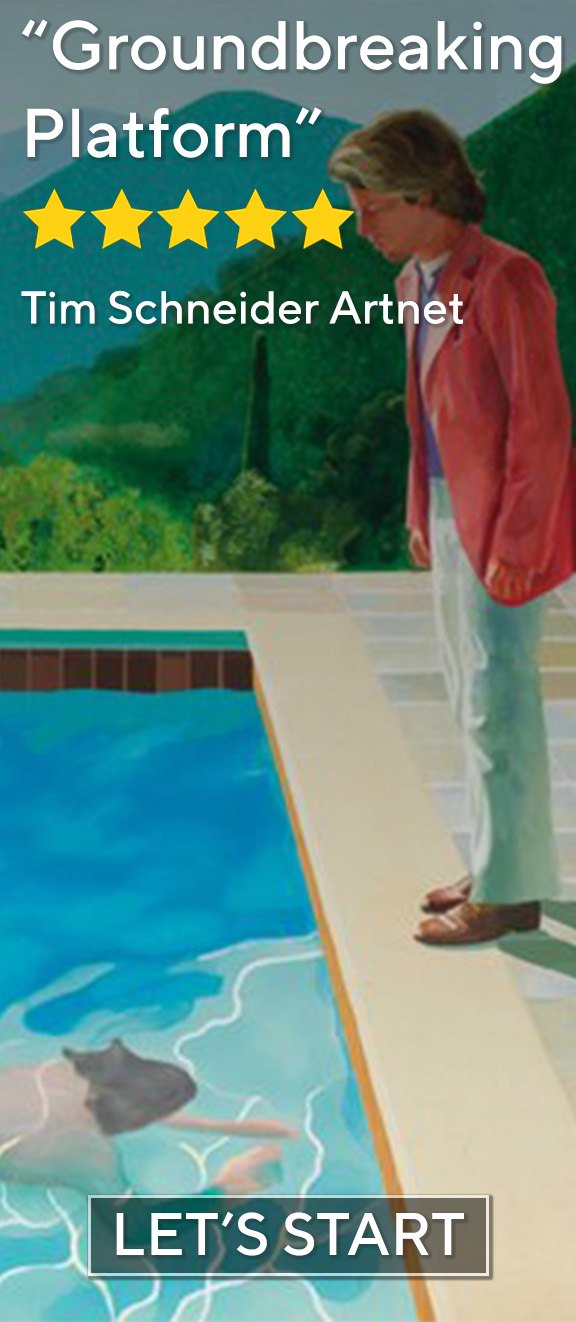“Pieter Bruegel the Elder: Once in a Lifetime” was on view from 2 October 2018 to 13 January 2019 at the Kunsthistorisches Museum, Vienna.
Four hundred fifty years after his death, Pieter Bruegel the Elder continues to cast an enigmatic shadow over the art world, his expansive imagination echoing through the halls of the Kunsthistorisches Museum in Vienna. The exhibition, Pieter Bruegel the Elder: Once in a Lifetime (2018–2019), uniquely celebrates the Netherlandish master’s legacy through an unprecedented assemblage of paintings, prints, and drawings. Curated by Elke Oberthaler, Sabine Pénot, Manfred Sellink, Ron Spronk, and Alice Hoppe-Harnoncourt, the exhibition’s thematic organization immerses visitors in Bruegel’s vividly detailed world, systematically highlighting his landscapes, societal narratives, and technical mastery across two extensive rooms.

Bruegel, born circa 1525, mastered miniature painting techniques under Mayken Verhulst before flourishing as a leading landscape and genre painter in Antwerp and Brussels. Renowned for his incisive societal critique and unparalleled observational skills, Bruegel’s career marked the apex of Netherlandish art in the 16th century. He transitioned from draughtsmanship into painting, creating pieces that transcended mere depiction and deeply engaged with humanist and moral philosophies.
Bruegel’s “Children’s Games” (1560), a bustling oil on panel, typifies his Wimmelbilder (‘busy pictures’) style with more than 230 figures engaged in ninety distinct games. The detailed visual encyclopedia of play doubles as subtle commentary on societal structures and educational philosophies of his time. With a remarkable technique, Bruegel captures human activity’s intricacy while subtly critiquing or celebrating aspects of contemporary life.
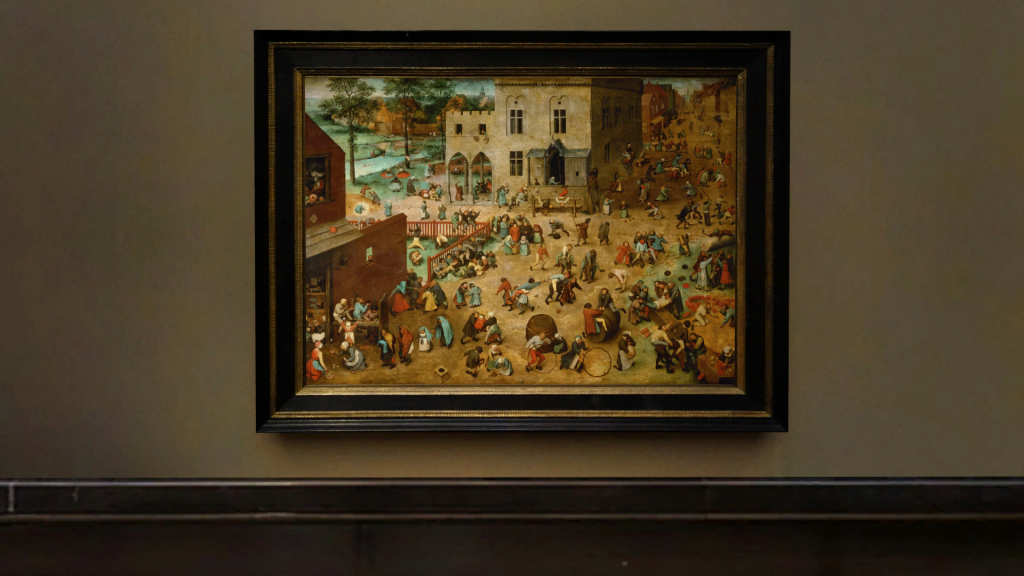
“Hunters in the Snow” (1565), from the celebrated Seasons series, dramatically encapsulates Bruegel’s genius in landscape painting. Depicting weary hunters amidst a stark winter, it emphasizes humankind’s struggle and harmony with nature. Bruegel’s mastery in rendering texture and atmosphere through muted palettes and deft contrasts makes this artwork a profound meditation on human resilience and the harshness of winter, epitomizing his unparalleled technical skill.
Bruegel’s prints, notably “Big Fish Eat Little Fish“, executed by engraver Pieter Van Der Heyden after Bruegel’s designs, illuminate his allegorical prowess. This work symbolically portrays societal greed and predation through fantastical imagery derived from the Boschian tradition, showcasing Bruegel’s capacity for blending incisive moral criticism with captivating visual storytelling.
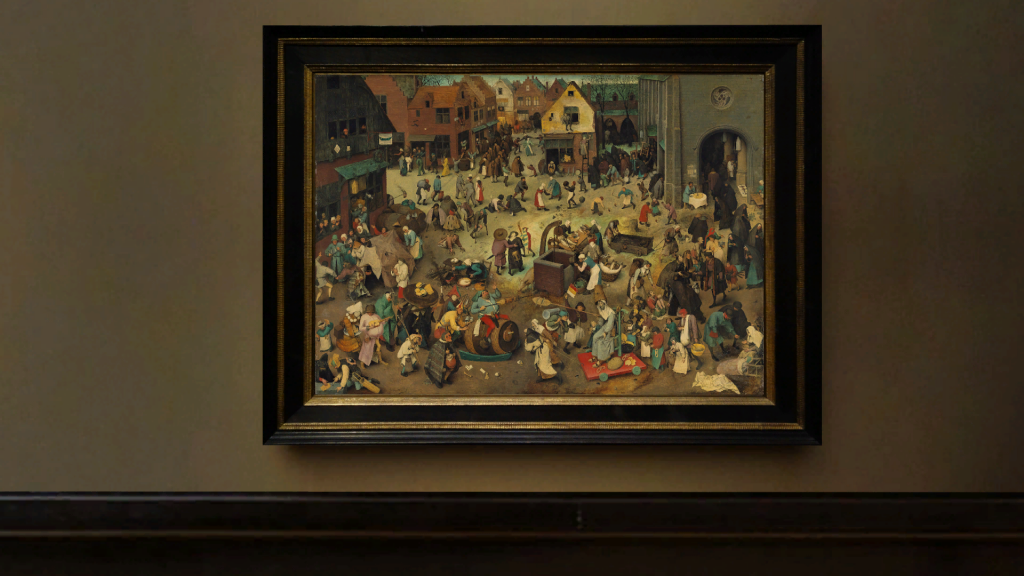
In “The Battle between Carnival and Lent” (1559), Bruegel artfully juxtaposes exuberance and austerity. The painting’s dense narrative structure compellingly explores societal tensions, meticulously balanced by Bruegel’s nuanced observational detail and compositional complexity. This work profoundly embodies the artist’s ongoing dialogue with societal norms and the cyclical nature of human folly.
The curatorial strength of this exhibition lies in its rigorous integration of recent scientific analyses with classical art historical methods, providing fresh insights into Bruegel’s creative process and materiality. The museum’s careful spatial design and supplementary digital materials enhance visitor experience, fostering intimate engagements with Bruegel’s meticulous details and expansive narratives. This thoughtful arrangement not only amplifies Bruegel’s relevance but also significantly contributes to contemporary art historical scholarship.
Bruegel’s compositions are meticulously detailed yet teem with dynamic narrative tension, offering endless discovery and interpretive depth.
Conclusively, the exhibition “Pieter Bruegel the Elder: Once in a Lifetime” embodies a rare confluence of scholarly rigor, curatorial insight, and sensory delight. Visitors experience not merely the artist’s mastery of form and narrative but also his profound cultural resonance and humanistic inquiry. Bruegel’s world, vivid and complex, continues to challenge and enthrall, asserting his lasting relevance to both historical scholarship and contemporary cultural discourse.


